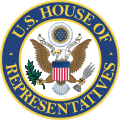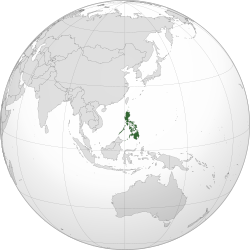| Resident Commissioner of the Philippine Islands | |
|---|---|
 | |
| United States House of Representatives | |
| Seat | Philippines |
| Formation | November 22, 1907 |
| First holder | Benito Legarda Pablo Ocampo |
| Final holder | Carlos P. Romulo |
| Abolished | July 4, 1946 |
The Resident Commissioner of the Philippine Islands to the United States (Spanish : Comisario Residente de las Islas Filipinas a Estados Unidos) was a non-voting member of the United States House of Representatives sent by the Philippines from 1907 until its internationally recognized independence in 1946. It was similar to current non-voting members of Congress such as the resident commissioner of Puerto Rico and delegates from Washington, D.C., Guam, the Northern Mariana Islands and other territories of the United States.
Contents
- History
- Election
- List of resident commissioners
- Insular government era: 1907–1936
- Commonwealth era: 1936–1946
- Philippines's at-large congressional district
- See also
- References
- External links
Like current non-voting members, resident commissioners could speak and otherwise participate in the business of the House, but did not have full voting rights. Two resident commissioners were sent until 1937, when after the establishment of the Commonwealth of the Philippines, the number was changed to one. [1]















